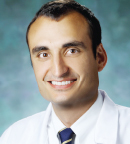
There are millions of cancer survivors who would benefit from telemedicine, and policymakers will listen to them.— Ray Dorsey, MD
Tweet this quote
Telehealth is the delivery of health care remotely via telecommunication tools. Its aim is to increase access to care, especially for patients with chronic diseases such as cancer and for populations for whom care is not always available. With the growing availability of broadband and portable diagnostic tools, telemedicine is rapidly being seen as a transformative force in health care. Although previous studies have looked at telehealth for chronic conditions, few have explored the efficacy of videoconferencing within the home setting.
The ASCO Post recently spoke with Ray Dorsey, MD, lead author of a national telemedicine trial about these and other issues in the use of telehealth services. Dr. Dorsey is David M. Levy Professor of Neurology at the University of Rochester (New York) Medical Center.
Intersection of Medicine and Technology
Aside from the obvious doctor-patient communication in telemedicine, how can this intersection of medicine and technology transform health care?
There is a fundamental flaw in the way we provide care: we, the healthy clinicians, ask the sick patients to come see us on our terms instead of our trying to connect with them on their terms. In that regard, telemedicine can help us bridge that gap in the care model. Naturally, there are limitations with remotely accessed care, but as technology and awareness advance, the limitations will lessen. We have a great opportunity to better serve populations that have historically been underserved.
We’ve seen exponential growth in technology over the past decade. How has this technologic explosion affected telehealth?
The technologies we use in telemedicine are the same tools used to connect people with their grandchildren, friends, and business associates. For the most part, it is simple web-based videoconferencing tools. The broadband availability and accuracy of the technology have improved, and it is almost free to use. The only challenges to implementing telemedicine are in areas without Internet access and for those patients who are not computer savvy. But those are fairly easy obstacles to overcome.
Cost of Care
Does telemedicine have an impact on health-care costs?
First off, the purpose of medicine is to deliver high-quality, patient-centered health care, not with the desired intent to reduce the cost of care. However, seeing a doctor is relatively inexpensive for follow-up of a person with Parkinson’s disease or cancer. Most costs do not come from doctors; they are driven by hospitals and institution-based care. So by using telemedicine, we can provide more in-home care for our patients and decrease the number of costly hospital and emergency room visits.
National Telemedicine Trial
Please describe your recent study in telemedicine.
We just completed a national, randomized trial that compared usual care of people with Parkinson’s disease in the community with those who received usual care augmented with four virtual house calls. The study is currently under review. It received a lot of attention.
During the recruitment period, 11,734 people visited the study’s website, and 927 individuals submitted electronic interest forms. From March 2014 to June 2015, we enrolled 210 individuals from 18 states, 195 of whom were randomized. Most of the randomized participants were white and college educated.
We found that national interest in receiving remote specialty care directly in the home setting was extremely high. Not only is remote care feasible, it also is safe, patient-centered, and cost-effective. It’s worth noting that more than 10,000 individuals from multiple countries all over the world visited the study website.
Patient Convenience
What is the main driver for interest in telemedicine?
For older people with chronic conditions such as Parkinson’s disease or cancer, the principal driver of telemedicine is probably convenience, especially for those patients living in suburban or rural areas who have limited mobility and difficulty driving. They also are spared the round-trip commute to the doctor’s office and the stay in the waiting room, which can take 2 or more hours. Moreover, data indicate that it might take up to 20 days to secure a 20-minute appointment with a doctor.
Barriers and Challenges
Besides what is commonly called the digital divide, are there other barriers to the adoption of telemedicine?
Licensure and reimbursement policies offer challenges to telemedicine in that state medical licensing boards usually require a physician to be licensed in the state where the patient in physically located. We actually had to exclude about 200 individuals from participating in our study because they lived in the wrong state.
The other major challenge is the lack of Medicare reimbursement, which, in fact, incentivizes the use of institutional care over community-based care. The Agency provides no coverage for virtual house calls. In contrast, the Department of Veterans Affairs has overcome licensure and reimbursement barriers and has readily adopted virtual home visits.
Closing Thoughts
Do you have any final words on this subject to share with the oncology community?
I think the applications of telemedicine for oncology are immense. For instance, it will save patients who are immunocompromised from their cancer treatment the effort and risk of having to visit a clinic full of sick people. Instead, a virtual house call can provide ongoing longitudinal follow-up care to cancer patients in their homes. This is the core of patient-centered care. As I mentioned previously, lack of Medicare reimbursement is a huge obstacle to wide adoption of telemedicine, but this policy issue can be overcome by the advocacy power of the oncology community. There are millions of cancer survivors who would benefit from telemedicine, and policy makers will listen to them. ■
Disclosure: Dr. Dorsey reported no potential conflicts of interest.

